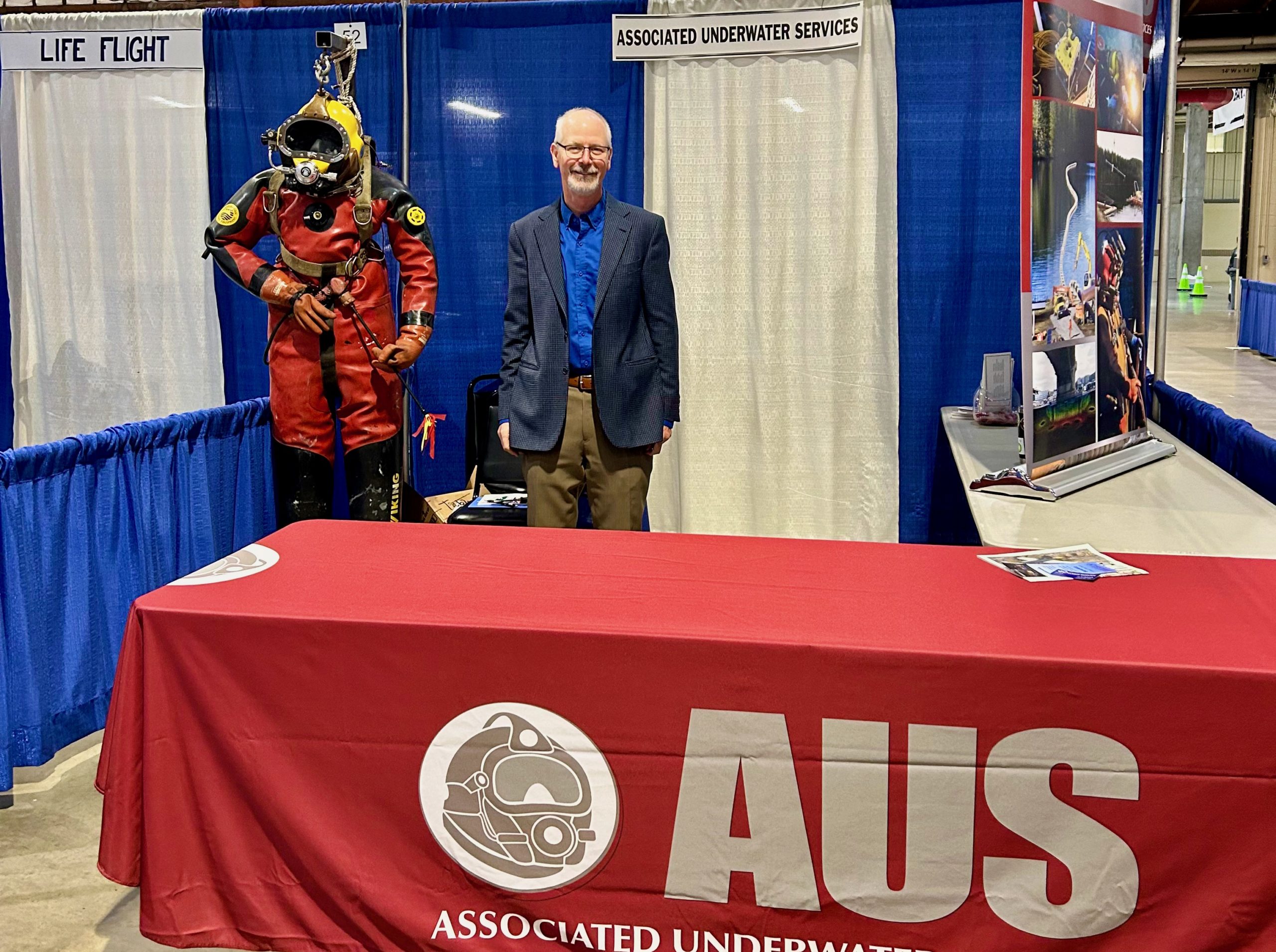Monday, January 07, 2013
Changes in environmental law left Seattle City Light to face an estimated $500,000 in construction costs when it wanted to install conduits for a new underwater fiber optic data line. The proposed maintenance would stretch across a tunnel that runs along a ship canal 60 feet below the surface of Portage Bay. The tunnel connects the utility’s substations on the other side of the water barrier to its systems control center.
The team receives final instructions from the dive team supervisor before entering the tunnel. Photo courtesy of Seattle City Light
 When the tunnel was built decades ago, water was pumped out for any maintenance or construction work. However, changes in environmental law required offsite disposal of any removed water and sediment. If that approach was used today it would cost $500,000, the utility said.
When the tunnel was built decades ago, water was pumped out for any maintenance or construction work. However, changes in environmental law required offsite disposal of any removed water and sediment. If that approach was used today it would cost $500,000, the utility said.
Instead, a dive team from Associated Underwater Services provided the utility with a new, less costly approach. A video on City Light’s Facebook page explains the process.
 City Light hired the scuba divers to help install the conduits while the tunnel remained flooded. The dive team guided a pull rope and the conduit through the tunnel while City Light crews fed the conduit from large rolls on one side of the ship canal and used a winch to pull conduit to the other side.
City Light hired the scuba divers to help install the conduits while the tunnel remained flooded. The dive team guided a pull rope and the conduit through the tunnel while City Light crews fed the conduit from large rolls on one side of the ship canal and used a winch to pull conduit to the other side.
That approach cost less than $20,000, City Light said.
“This was some out-of-the box thinking by the project team that paid off for our ratepayers,” said City Light Customer Service and Energy Delivery Officer Phil West. “Saving half a million dollars makes a difference. That’s money that can be put to work on other system needs without putting additional pressure on rates. It’s great to have dedicated employees who look for creative, cost-effective solutions.”
Crews will return later to install the fiber optic cable in the underwater tunnel, which will provide a dedicated data link for City Light and enhance reliability, the utility said.
Three other data lines City Light uses are carried on overhead wires and are shared with other city departments.
“Seattle City Light could have installed another overhead wire, but wanted to install an underground line to avoid disconnection problems,” said City Light spokesman Scott Thomsen. “We have experienced situations where large construction projects downtown have required us to take down sections of some of the overhead communications lines. That can mean only one or two lines are up and working. An underground line won’t have that problem.”—FALLON FORBUSH
The first Associated Underwater Services diver prepares to enter the tunnel. Photo courtesy of Seattle City Light
Copyright © 2013, American Public Power Association






